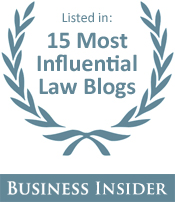Whistleblower Law Blog
Health Care Reform Bill Creates New Whistleblower Protections
The Patient Protection and Affordable Care Act of 2009 (H.R. 3590) that the House approved on March 21, 2010, creates new whistleblower protections for health care workers and strengthens the coverage of the False Claims Act. The following is a summary of these provisions and the text of the relevant sections is available here.
Health Care Worker Whistleblower Protections
Section 1558 prohibits retaliation against an employee who provides or is about to provide to an employer, Federal Government, or a state Attorney General, information that the employee reasonably believes to be a violation of Title I of the Bill. The provision also protects individuals who participate in investigations or object to or refuse to participate in any activity that the employee reasonably believes to be a violation of Title I of the bill. Title I contains a wide range of rules governing health insurance, including a prohibition against denying coverage based upon preexisting conditions, policy and financial reporting requirements and prohibitions against discrimination based upon an individual’s receipt of health insurance subsidies. Accordingly, Section 1558 will likely protect a broad range of disclosures.
The procedures, burden of proof, and remedies applicable to this new retaliation claim are set forth in the Consumer Product Safety Improvement Act of 2008, 15 U.S.C. 2087(b), including (1) a 180-day statute of limitations; (2) a requirement to initially file the complaint with OSHA, which will investigate the complaint and can order preliminary reinstatement; (3) the option to litigate the claim before the Department of Labor Office of Administrative Law Judges or to remove the claim to federal court 210 days after filing the complaint; (4) the right to try the claim in federal court before a jury; and (5) a broad range of remedies, including reinstatement, back pay, special damages, and attorney’s fees. Similar to Section 806 of the Sarbanes-Oxley Act, the causation standard and the burden-shifting framework are very favorable to employees.
A complainant can prevail merely by showing by a preponderance of the evidence that her protected activity was a contributing factor in the unfavorable action. A contributing factor is “any factor which, alone or in connection with other factors, tends to affect in any way the outcome of the decision.” Once a complainant meets her burden by a preponderance of the evidence, the employer can avoid liability only if it proves by clear and convincing evidence that it would have taken the same action in the absence of the employee engaging in protected conduct, an onerous burden.
Protections for employees of federally funded long-term care facilities.
Long-term care facilities that receive more than $10,000 in federal funding in the preceding year must notify all officers, employees, managers, and contractors of the facility that they are required by law to report any reasonable suspicion of a crime to at least one law enforcement agency. Failure to report a suspected crime can expose an employee, manager, or contractor to civil fines of up to $200,000. A long-term care facility is prohibited from engaging in retaliation against an employee “because of lawful acts done by the employee.” Facilities violating the anti-retaliation provision may be subject to a fine of up to $200,000 and exclusion from federal funds for up to two years.
Implementation of standardized complaint forms for nursing homes and prohibition against retaliation.
Section 6105 requires nursing homes to implement a standardized complaint form and requires each state to develop a complaint resolution process to track and investigate complaints and to ensure that complainants are not subjected to retaliation.
Expands the definition of an “original source” under the False Claims Act.
Section 10104(j)(2) strikes 31 U.S.C. 3730(e)(4)(A) and replaces it with language expanding the definition of an “original source” to include “individual who either (i) prior to a public disclosure under subsection (e)(4)(a), has voluntarily disclosed to the Government the information on which allegations or transactions in a claim are based, or (2) who has knowledge that is independent of and materially adds to the publicly disclosed allegations or transactions, and who has voluntarily provided the information to the Government before filing an action under this section.” This new definition of “original source” will bring much-need uniformity to this critical issue that arises in most qui tam actions and increase the likelihood that relators will be able to meet the original source exception to the public disclosure bar.
Tagged: Enforcement Bodies, Occupational Safety and Health Administration (OSHA), Whistleblower Laws (Federal)



